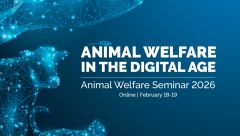In 1965, the British government (UK Farm Animal Welfare Council) first introduced the concept of the ‘five freedoms' for animals, a set of principles that provide a basic framework for analysis of welfare within any animal production system. This was the first real attempt to define the key animal welfare requirements for livestock and has strongly influenced the direction of government policy on farm animal welfare across the world. However, with the more recent development of quality assurance or accreditation programs, questions have been asked about the practical application of the principles contained in the five freedoms. While the five freedoms provide the starting point for setting animal welfare standards, they do not provide sufficient detail for those assessing and auditing production systems. What are clearly needed are scientifically based animal welfare standards that provide sound guidance for animal producers.
The challenge to scientists is to adopt a multi-disciplinary approach to developing such standards that encompasses concepts of animal behaviour, physiology, health and immunology. Research on food animals has traditionally focussed on how production levels can be increased. It has only been more recently that scientists have begun to investigate issues of behaviour and cognition in these species. In its 2006 Scientific Seminar, RSPCA Australia asked: What are the biological and behavioural needs of production animals? And how can farm animal welfare science give us greater insights to align husbandry and management practices to better suit those needs?
The Seminar tackled these important questions through an examination of the traits and characteristics of common production animals using recent research examples and specific behavioural case studies. The Seminar demonstrated how increasing our understanding of livestock can improve husbandry practices for the benefit of both animals and producers.






